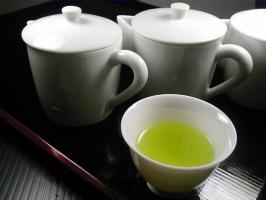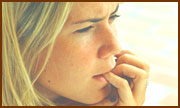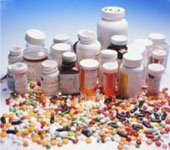Sunscreen
 Summer is in full swing. The sun is shining high in the sky, pools and beaches are calling to us to come out and play. But Susan Bayliss, MD, director of pediatric dermatology at St. Louis Children's Hospital, reminds parents that there is one essential item for every family to have nearby for the summer months: sunscreen. "Because 80 percent of sun damage to the skin occurs before 18 years of age, it is very important to protect our children from harmful ultraviolet rays," she says.
Summer is in full swing. The sun is shining high in the sky, pools and beaches are calling to us to come out and play. But Susan Bayliss, MD, director of pediatric dermatology at St. Louis Children's Hospital, reminds parents that there is one essential item for every family to have nearby for the summer months: sunscreen. "Because 80 percent of sun damage to the skin occurs before 18 years of age, it is very important to protect our children from harmful ultraviolet rays," she says.We all need some sun exposure; it's our primary source of vitamin D, which helps us absorb calcium for stronger, healthier bones. But it doesn't take much time in the sun for most people to get the vitamin D they need, and unprotected exposure to the sun's ultraviolet rays can cause skin damage, eye damage, immune system suppression, and even cancer. Even people in their 20s can develop skin cancer.
Most children rack up between 50% and 80% of their lifetime sun exposure before age 18, so it's important that parents teach their children how to enjoy fun in the sun safely. With the right precautions, you can greatly reduce your child's chance of developing skin cancer.
A good start is avoiding prolonged exposure to the sun between the peak hours of 10 a.m. and 3 p.m. That doesn't mean you have to keep children indoors — but take breaks from sun exposure during those hours, and make sure children wear sun protection when they are in the sun.
 Slather it On
Slather it OnSunscreens that block both UVA and UVB light with a minimum sun protection factor (SPF) of 15 should be applied liberally, especially to the face, ears, neck and backs of the hands. "People with fair skin, light eyes and blond or red hair should wear sunscreen year-round," Dr. Bayliss says. Sunscreen should be reapplied every three to four hours.
Parents who choose waterproof sunscreen for their kids should remember that it only lasts for 30 minutes in the water, so it needs to be reapplied more often. Zinc oxide can be used on sensitive areas like the nose and shoulders to provide a complete sun block.
Check Expiration Dates
Before you rely on any type of sunscreen, remember that it does expire, especially after being exposed to the heat of the sun or the high temperatures of the car. "I suggest parents buy sunscreens fresh each summer," Dr. Bayliss says.
Keep the Very Little Ones Out of the Sun
"Sunscreens have not been tested on babies under 6 months," Dr. Bayliss says. "Babies need to be in the shade and covered with clothing." Dr. Bayliss advises parents to use sunscreen on babies only if sun exposure is unavoidable and only in addition to clothing.
The American Academy of Pediatrics now states that sunscreen is probably safe to use on younger children, as young as six months, especially if you just use it on small areas of your baby's skin that is exposed to the sun and not protected by clothing, such as the infant's hands and face.
But babies, especially those with fair skin, should not be out in the sun that long. “Parents should definitely avoid putting their babies to sleep in the sun," Bayliss says.
Still, younger children should be kept out of direct sunlight because they can burn easily and may not be able to handle getting overheated as well as older children. So even though it is likely safe to use sunscreen on kids less than six months old, it is safer to keep them out of the sun.
Don’t Let the Clouds Fool You
Dr. Bayliss also reminds parents to be just as cautious on cloudy days. Because as much as 80 percent of the sun's ultraviolet radiation can get through the clouds, they offer little protection for sunburn. Plus, beachcombers must remember that sand and water reflect sunlight and can contribute to sunburn. In addition to sunscreen, children should wear hats and sunglasses.
And, before you head off to that sunny vacation, Dr. Bayliss tells parents to check with their pediatrician to determine whether any medicines their child takes can increase sensitivity to the sun.
 Other tips to keep your kids safe from the sun:
Other tips to keep your kids safe from the sun:When buying sunscreen look for:
the the highest SPF you can find, typically 50+, though some experts believe that they don't provide that much extra protection. Some experts go as far as to say the SPF rating should be capped at 30.
a kids' brand (Banana Boat Kids, Coppertone Kids, Coppertone Waterbabies, etc.)
While it is fine to use these, they are really not that much different from those that are made for adults, so you don't really have to buy a separate sunscreen just for your kids.Apply enough sunscreen to protect your child. Most experts estimate that many parents only use about half of the recommended amount of sunscreen on their children, providing less protection than they think.
a sunscreen that is water resistant. Even if you aren't going swimming, if your child is outside, he will likely be sweating, so a water resistant might provide better protection than a regular sunscreen. Be sure to reapply sunscreen regularly and at least every 2 hours, or more often if your child is swimming or sweating.
hypoallergenic and fragrance free, especially if your child has sensitive skin.
a form that is easy to use on your child, whether that means it is a gel, lotion, spray, continuous spray, etc.
Remember to apply sunscreen at least 30 minutes before your child will be exposed to the sun.
Use sunscreen even if it is cloudy outside. Clouds don't absorb all of the UV radiation that may harm your child.
Avoid sun exposure when the effects of the sun are the strongest, which is usually from about 10 a.m. to 4 p.m.
Use physical protection, including clothing, such a hat with a 3-inch brim, lightweight long pants and long-sleeved shirts, and/or a stroller, tent, umbrella or tree.
Encourage your children to wear sunglasses that protect against ultraviolet rays.
Remember that a sunscreen isn't better just because it is more expensive. Saying this, I buy La Roche Posay Anthelios SX sunscreen for my children's faces. Overpriced and available at CVS. BUT, it IS a french product and I really do trust those Euro brands. It is a daily moisturizer containing Mexoryl™ SX, a unique organic UV filter that is highly protective against short UVA waves, provides comprehensive UVA/UVB protection*. Anthelios SX features the first new sun filter in a sunscreen approved by the FDA in 18 years.
For more information about Anthelios SX, Mexoryl SX and UV rays, please visit Anthelios.com.
Broad Spectrum Sunscreens
Unfortunately, many sunscreens that say that they are broad spectrum really aren't or don't block rays from the full UVA spectrum. To get good protection from UVA rays, look for sunscreens that list avobenzone, titanium dioxide, or zinc oxide as ingredients.
Sunscreen Ingredients
If your child gets a rash from his sunscreen, you might review the ingredient's list and choose a different one next time. Make sure to choose one that is PABA free. You might also look for one that gets its UVA protection from a sunblock, such as titanium dioxide or zinc oxide, since they can be less irritating than avobenzone, a common sunscreen ingredient.
Be sure to apply it to just a small area of your child's skin if you think he might have a reaction to the new sunscreen too.
 Unprotected sun exposure is even more dangerous for kids with:
Unprotected sun exposure is even more dangerous for kids with:moles on their skin (or whose parents have a tendency to develop moles)
very fair skin and hair
a family history of skin cancer, including melanoma
You should be especially careful about sun protection if your child has one or more of these high-risk characteristics.
So before you send your kids outside to play in the sun- just make sure you take the necessary precautions when it comes to sun exposure! AND don't forget to slather YOURSELF- everywhere I missed a spot the other day and the burn STILL hurts. Don'y you hate it when that happens??
-SBH










